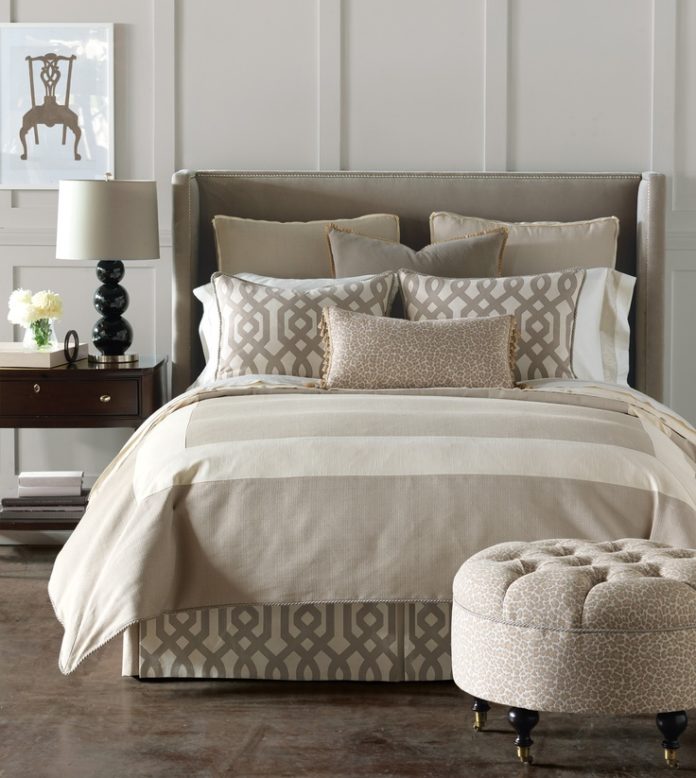There is nothing that can come close to the feeling of climbing into a freshly made bed. That is except the feeling of brand new sheets, of course!
Whether you’re looking to introduce a little extra luxury and comfort into your life, or you simply want to update the look of your bedroom and get rid of old and worn sheets, buying a new set of bed sheets isn’t something you want to rush into.
We all spend a considerable portion of our lives in bed. Naturally, we all want our beds to be as comfortable as possible. A comfortable bed is a key ingredient of a good sleep routine. Many people suffer from a chronic lack of sleep without realizing it. Yet this relatively common issue can cause serious problems.
Sleep deprivation is damaging to both our physical and emotional health. It is, therefore, imperative that we all try and get enough sleep every night. Having the wrong bed sheets can potentially ruin your entire sleeping experience!
In order to make sure that the bed sheets you purchase are the right ones for you, you need to think carefully beforehand about your requirements. The following guide will help you to identify the key features to look out for and the key questions to ask any sales assistants.
Fiber Content
When you are looking for something simple, soft, and affordable then 100% cotton is always a safe bet. On the other hand, if you are in the market for something a little more premium, there is extra-long staple cotton (ELS), such as Egyptian or Pima. ELS cotton is softer and more durable than regular cotton, but you will need to pay more for the privilege.
If you decide to pursue a more expensive or specialist options such as ELS, you need to make sure that you are purchasing from a reputable supplier. There have been instances of inferior cotton being mislabeled as Egyptian, or another premium type.
Assuming you aren’t opposed to a more synthetic feel then you might want to consider a cotton/polyester blend. Polyester is durable and resistant to wrinkling, while also remaining affordable.
Thread Count Isn’t Everything
If you only know one thing about bed sheets it is probably the importance of thread count. Traditional wisdom holds that the higher the thread count is, the more luxurious the material. Higher thread counts are associated with a material that is exceptionally soft and comfortable.
However, the story with thread count is not nearly so simple. Modern manufacturing techniques make it possible for manufacturers to produce material with higher thread counts that don’t actually increase in quality.
According to a study conducted by goodhousekeeping.com, the sweet spot for thread count is 300 – 500. The material in this range has the perfect blend of softness and strength. However, with that in mind, you should also be aware that there are 200-thread count sheets that are of good quality. They won’t quite match the 300 – 500 versions, but they should leave most customers satisfied. Anything over 500 is overkill and you are likely paying for the number rather than for the quality.
Know Your Weaves
When it comes to weave options, there are two main types that you will encounter. These are percale and sateen.
Percale is a basic pattern that consists of a grid-like weave. This weave produces fabrics which are light and crisp. Many people find percale sheets to be much more comfortable during those hot summer nights. The main selling point of percale as a weave for bed sheets is its lightweight and breathable qualities.
By contrast, sateen sheets are silky smooth and shiny. Because of this, many people feel that sateen sheets are more luxurious. Sateen is known for being thicker than percale, for both its luster and drape. The softest sheets are usually sateen.
The soft and inviting touch of sateen, coupled with its thicker size and tight weave, makes it the perfect choice for winter sheets.
Don’t Assume That it Will Fit
It is incredibly frustrating going through the process of working out what bed sheets you need, tracking down the perfect supplier, and getting your new sheets home only to realize that they don’t fit your bed. You won’t be surprised to learn that this is a relatively common occurrence, but it is one that is easy to protect against.
Beds tend to come in standard sizes, either king or queen. But this only accounts for the length and width of the mattress; it doesn’t consider the depth. If your mattress is particularly tall, or if you have memory foam or something similar on top, then you will want to double check all the dimensions before you buy.
It is a good idea to buy sheets which are just slightly oversized. This is because sheets will often experience some degree of shrinkage after being laundered.
Always Check the Returns Policy
As you might have guessed from the rest of this guide, buying the right bed sheets isn’t an exact science. Most of us won’t be able to choose the right set of sheets first time. It takes time and experience to work out exactly what it is that you want from your bed sheets. Once you do know what you want, you then need to work out how you can get it.
If money is tight, the cost of a set of new bed sheets can be a significant chunk of your household finances. Make sure that you carefully examine the returns policy of the store that you are considering buying from. More generous return policies usually indicate a more confident business.
It isn’t easy knowing whether bed sheets are right for you until you’ve actually slept on them. Many of the companies that only offer internet sales will be happy to exchange or refund for any reason. However, if you purchase from the high street, their returns policies are often less generous.
Buying new bed sheets can seem a little daunting at first. But if you know what to look for, buying bed sheets is as easy as buying bread. Keep the above tips in mind and, as always, make sure you research before you buy.















































